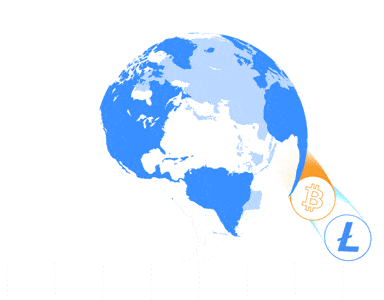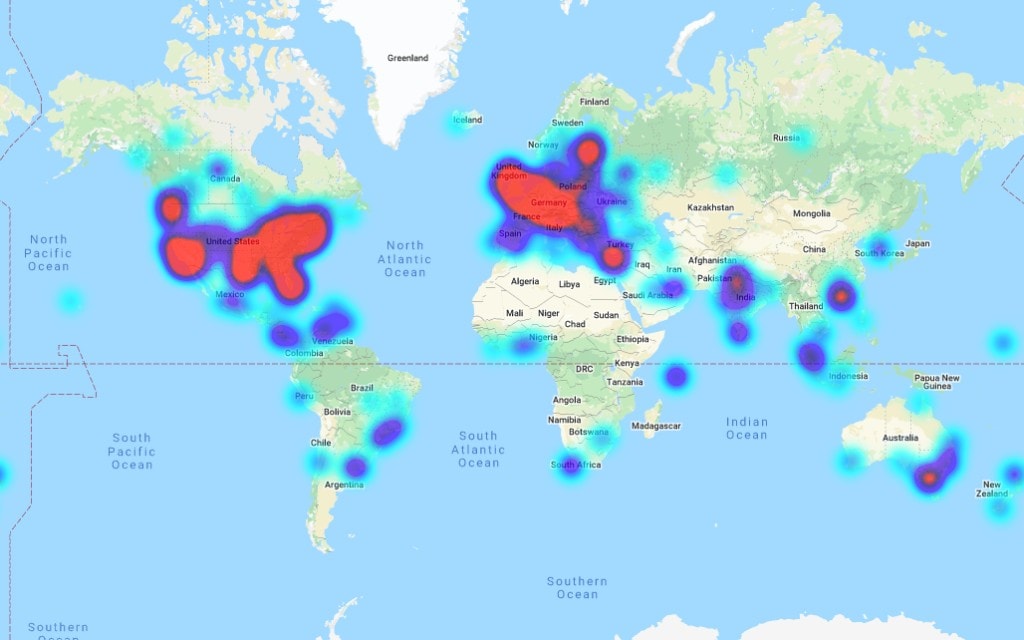What is Litecoin?
Most people have heard of Bitcoin but there it is not the only cryptocurrency in the market. Litecoin is one of the oldest and most popular altcoins (a term used for cryptocurrencies that is not Bitcoin) in the space. Litecoin is a peer-to-peer Internet currency that enables instant, near-zero cost payments to anyone in the world. If Bitcoin were digital gold promoting the store of value, Litecoin touts itself as digital silver. In many ways, Litecoin and Bitcoin are similar. In fact Litecoin is a fork of the Bitcoin core client and it launched in 2011. The vision behind Litecoin was to create a lighter version of Bitcoin. Similar to how silver is used more in day to day activities, Litecoin wants to make transactions cheaper and made for everyday purposes.
Unlike Bitcoin’s anonymous creator “Satoshi Nakamoto”, Litecoin’s founder, Charlie Lee, is well known and is very active on social media. He worked at Google before starting Litecoin. After creating litecoin, he held a position in Coinbase, one of the top cryptocurrency exchanges in the world, as director of Engineering. He eventually quit in 2017 to focus full time on Litecoin.
Litecoin has always been at the top of the cryptocurrency markets for years already although it has fallen a few spots and now sits at 7th on the cryptocurrency market cap rankings. Litecoin’s price is currently hovering around $42 which gives it a market cap of around $2.75 Billion
Onchain stats
- Price – $42
- Marketcap – $2.75 Billion
- Circulating Supply – 64,482,019 LTC
- Max Supply – 84,000,000 LTC
- Rank – Top 7 in terms of marketcap
- Number of wallets – Over 1.4 million wallets that hold more than $1 worth of Litecoin
- Hash – 151 Terahash per day (Scrypt)

How does Litecoin Work?
Proof of Work
Litecoin also uses a proof of work consensus mechanism like Bitcoin. The miners use their computational power to solve extremely hard cryptographic puzzles that can be done by trial and error. This means that the amount of computational power you put in (called hashpower) is proportional to the amount of rewards you get. The more hashpower there is on the network, the harder it is for bad actors to take over the network thus making the network more secure.
While both Bitcoin and Litecoin use proof of work, they approach it differently. Bitcoin uses the SHA-256 hashing algorithm while Litecoin uses the Scrypt hashing algorithm. SHA-256 is slower, more complex and thus requires more computational power. Litecoin’s Scrypt, on the other hand, is much lighter and faster. Scrypt uses a sequential memory-hard algorithm which aims to be ASIC resistant. They believe that ASIC mining is flushing out the smaller players and so it becomes less decentralized. However, developers eventually found a way to create ASIC miners for Scrypt algorithms as well. So nowadays, it’s mineable by both ASIC and GPUs.
Due to Scrypt’s simplicity and speed, Litecoin block confirmations happen every 2.5 minutes compared to Bitcoin’s 10 minutes making it more feasible for day to day transactions. Since it is 4x faster, the halving rewards date is quadrupled to every 840,000 blocks to match Bitcoins’ 210,000 blocks which happens approximately every 4 years. Litecoin also has a maximum supply that is 4x of Bitcoin at 84,000,000 LTC.
The first rewards halving of Litecoin happened in August 2015, which slashed the rewards per block from 50 LTC to 25 LTC. The second was the latest halving which happened in August of 2019, which slashed the rewards from 25 LTC to 12.5 LTC. The next halving is expected to happen sometime in August 2023 which would halve the rewards to 6.25 LTC per block. Halving events are usually seen as bullish signs in terms of price because there will be less sell pressure coming from the miners.
What is Litecoin used for?
Since Litecoin is much faster and lighter than Bitcoin, it wants to be used in everyday transactions such as buying coffee or paying for groceries. It is widely accepted all over the world with thousands of merchants accepting Litecoin as a form of payment already. In July of 2019, they partnered with Flexa, an american based payment startup, which opened it to 39,000 new merchants. The heat map below shows where most LTC accepting merchants are located. Most are still in Europe and North America. Although it is already spread all over the world, this is still small compared to traditional financial products.

Litecoin has also been active in promoting itself as a payment method through the Litecoin Foundation. One of its biggest sponsorships was when it sponsored the UFC 232 in 2018 with a spiel from the announcer shouting “Take Control of Your Money and Pay With Litecoin!”.
Key Metrics
| April 2020 | |
| Price of LTC | |
| Avg. Transactions per hour | 1,033 |
| Avg. Transaction Value | 145 LTC (~$6,700) |
| Avg. Block time | 2m 30s |
| Max Supply | 84,000,000 LTC |
Litecoin’s Timeline
2011 – Released via open source client on Github and went live subsequently
2015 – First Halving block rewards reduced to 25 LTC
May 2017 – Activates Segwit which decreases data used and increases limits per block to from 1mb to 4mb
May 2017 – Litecoin sends the first lightning network enabled micropayment which was settled in less than a second.
Dec 2017 – LTC reached a high of $360
2019 – Second Halving bock rewards reduced to 12.5 LTC
Litecoin Foundation
Litecoin is supported by a non-profit organization called Litecoin Foundation. The aim of the foundation is to use resources and funds to advance Litecoin for the good of society by developing and promoting state-of-the-art blockchain technologies. It is an organization registered in Singapore with members all over the world. Charlie Lee sits as the managing director. The Litecoin Foundation also works closely with the Litecoin Core development team in providing support and guidance.
Where can I buy LTC?
Auto generated
How to properly store Litecoin?
Since Litecoin is on a different network than Bitcoin or Ethereum, it will have its own wallet. This means that you cannot deposit LTC in your bitcoin wallet. Litecoin addresses will start with L followed by a mix of 33 numbers and letters.
Hardware Wallets – auto generated
Online Wallets – auto generated
Real world use cases (Who’s using it?)
Litecoin is already being used everyday by people to pay for goods and services all over the world. The Litecoin Foundation keeps track of merchants from all over the world that directly accept Litecoin. Categories range from travel to shopping and even precious metals. Some of the more popular stores that accept Litecoin are Overstock.com and Travala.com. Aside from this, Litecoin also works with payment providers who provide access to thousands more partners.

Pros and Cons
Pros
- Fast transactions and Low transaction fee
- Team is very nimble and is quick to implement upgrades
- Works towards Bitcoin compatibility
Cons
- The payment use case is quickly getting overcrowded
- Founder has mentioned that he has sold all of his Litecoin holdings
- Failure of Litepay, a separate payment processing startup that focuses on Litecoin. It’s seen as a counterpart to Bitpay which processed over $1 Billion in transactions in 2019.
FAQ
Confirmation time
Blocks are mined every 2.5 minutes.
Transaction fees
Transaction fees vary depending on network activity. Since the past few days have been relatively normal, the average fee per transaction is at $0.015
Halving dates
Litecoin will have it’s third halving by August of 2023 which brings down miner rewards to 6.25 LTC.
Updates on Litecoin
As explained above, Litecoin is usually one of the first to implement new technologies. Bitcoin usually follows suit just like in the case of segwit. There are a lot of things Litecoin is looking to add. One of the features that excites most people is the implementation of the Mimble Wimble design. This will greatly improve privacy, security as well as network scalability.